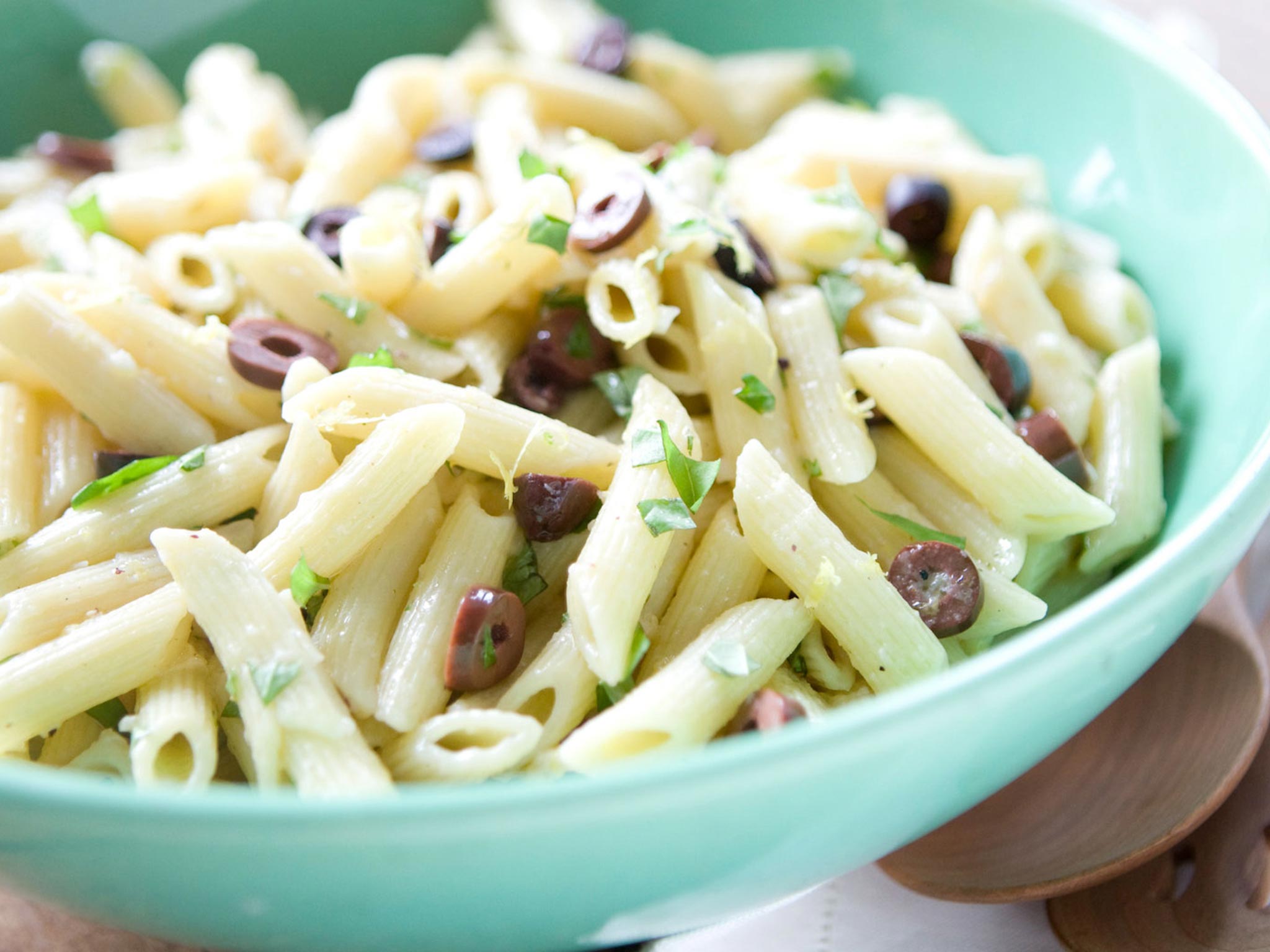Olive Oil Penne Pasta is a straightforward side dish that is quick to prepare simple and customizable to be a full meal. Mix your favorite ingredients and veggies to elevate it from a basic side in minutes. It is versatile, simple, and always a hit.
While it shares some similarities with the Italian dish Aglio e Olio, they are quite different. Aglio e Olio is a staple in Italian cuisine known for its minimalistic approach, primarily featuring garlic (aglio) and oil (olio), often with a sprinkle of parsley and a kick of red pepper flakes.

Our recipe, on the other hand, offers more flexibility and is intended for adaptability with the addition of numerous proteins and vegetables.
Olive Oil Penne Pasta easily conforms to the ingredients we have on hand to create a satisfying meal. Some nights, a bowl of pasta like this one that is easy but packed with flavor is just what we need.
This pasta is the same as Pasta Aglio e Olio, another pantry-friendly pasta that comes in just a few minutes. Feel free to add leftover roast chicken or meat to this pasta, or a handful of chopped kale or other greens to make it heartier.
However, you can sauté a handful of shrimp with the garlic and olive oil for something that resembles scampi. And other fresh herbs, like basil and oregano, work better in this utterly flexible recipe.
Understanding Garlic Penne Pasta

As the name implies, penne pasta is a type of noodle that is typically made from durum wheat, water, or eggs. It is fashioned into different noodle shapes and then cooked in boiling water.
These days, most products sold as pasta are made from common wheat. Notwithstanding, the same noodles can be made from other grains, such as rice, barley, or buckwheat.
Pasta is refined during processing, stripping the wheat kernel of the bran and germ, removing many of the nutrients. Now and then refined pasta is enriched, meaning it has some nutrients, such as B vitamins and iron, added back in.
Whole-grain pasta is also available, which contains all parts of the wheat kernel.
A few examples of commonly taken types of pasta include Spaghetti, Tortellini, Ravioli, Penne, Fettuccine, Orzo, and Macaroni.
Why Sauté with Both Olive Oil and Butter
Well! Using both butter and olive oil means you get the creamy, rich flavor of butter, however, with the higher smoke point that comes from the olive oil.
This will make it easier to cook the garlic without risking that the milk solids in the butter will start to burn.
Benefits of Adding Olive Oil to Garlic Penne Pasta

If you are preparing a fresh summer pasta recipe that will need seasoned later. The best option is to add a teaspoon of Italian Olive Oil. This will keep the pasta from sticking while preparing and will also improve the flavor and texture.
Pasta and oil are the best combinations to assist regulate intestinal transit. This is to say that flavor and health go hand in hand when adding olive oil to pasta water.
Feel free to add olive oil to pasta water, even though the matter has been up for discussion between countries and foodies for years, now we will answer the salt or oil in pasta water dilemma once and for all.
Best Pasta Shape for Olive Oil
Generally, toss thin sauces like seasoned olive oil with long, thin kinds of pasta spaghetti, bucatini, spaghettini, and linguine.
Thin sauces coat each strand evenly. A chunkier sauce works nicely with a short, thick pasta-like penne.
Pre-cooking Stage
The garlic-olive oil sauce can stand, covered, at room warmth for up to one day or in an airtight container in the refrigerator for up to three days.
Ensure that you watch the garlic as you cook it; you can’t save burnt garlic. If it starts to brown, pull the pan from the heat so it doesn’t burn and turn bitter.
Ingredients
1 pound rigatoni or other tubular pasta
½ cup extra-virgin olive oil
4 tablespoons unsalted butter
3 medium garlic cloves (minced)
1 ½ teaspoons salt
Freshly ground pepper
¼ cup chopped flat-leaf parsley
Directions
- Use a pot of salted water to a boil and prepare the rigatoni until al dente, about 12 minutes. Drain and return the rigatoni to the pot.
- Using a small saucepan, mix the oil, butter, garlic, salt, and a few grinds of pepper. Cook over moderately high heat, stirring often, until the garlic is softened, 1 to 2 minutes.
- Toss the hot pasta with the olive oil sauce and parsley and serve.
Bottom Line
This recipe needs high-end olive oil, as it makes a huge difference in the final flavor. Olive oil is the featured flavor here and you just need one that is quality.
However, it will make all the difference so be sure to use a good one. Be sure to use extra virgin olive oil for the best flavor.


Leave a Reply